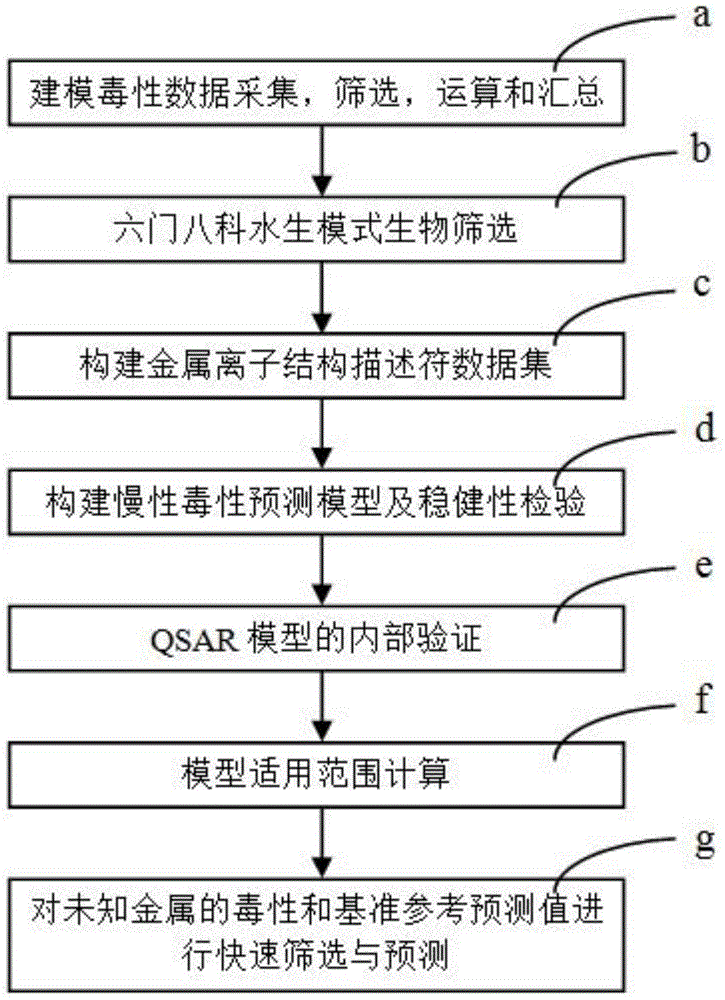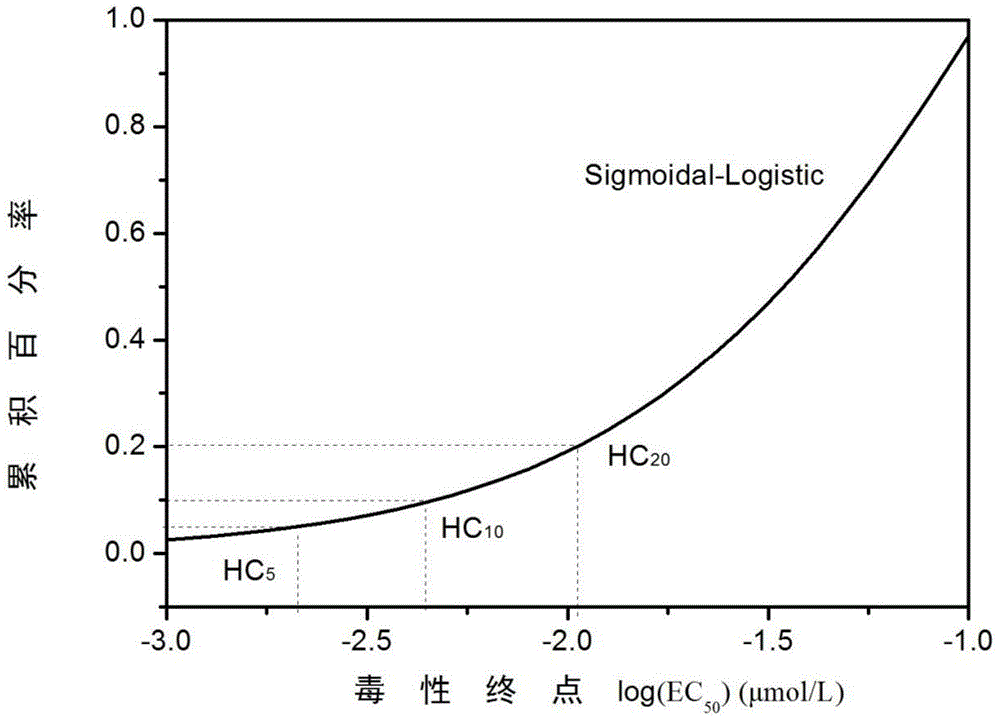Fresh water chronic standard prediction method based on metal quantitative structure-activity relation
A technology of quantitative structure-activity relationship and prediction method, which is applied in general water supply conservation, special data processing applications, instruments, etc., and can solve the problems that there are still few studies on heavy metal chronic toxicity prediction models, and no patent publications have been retrieved.
- Summary
- Abstract
- Description
- Claims
- Application Information
AI Technical Summary
Problems solved by technology
Method used
Image
Examples
Embodiment Construction
[0059] The above and other technical features and advantages of the present invention will be described in more detail below in conjunction with the accompanying drawings.
[0060] The principle of the present invention is to predict the toxicity endpoint of unknown metals based on the quantitative relationship between the structural characteristics of heavy metal ions and the chronic toxicity effects of aquatic organisms, and combine the sensitivity distribution analysis of different species to deduce the dangerous concentrations that protect 5%, 10% and 20% of aquatic organisms . It is a method to establish a QSAR metal toxicity prediction model based on the physical and chemical structure parameters of heavy metals and the toxicity mechanism of different aquatic organisms, and apply it to predict unknown benchmark reference values.
[0061] Such as figure 1 As shown, it is a schematic flow chart of the freshwater chronic benchmark prediction method based on the quantitativ...
PUM
 Login to View More
Login to View More Abstract
Description
Claims
Application Information
 Login to View More
Login to View More - R&D
- Intellectual Property
- Life Sciences
- Materials
- Tech Scout
- Unparalleled Data Quality
- Higher Quality Content
- 60% Fewer Hallucinations
Browse by: Latest US Patents, China's latest patents, Technical Efficacy Thesaurus, Application Domain, Technology Topic, Popular Technical Reports.
© 2025 PatSnap. All rights reserved.Legal|Privacy policy|Modern Slavery Act Transparency Statement|Sitemap|About US| Contact US: help@patsnap.com



